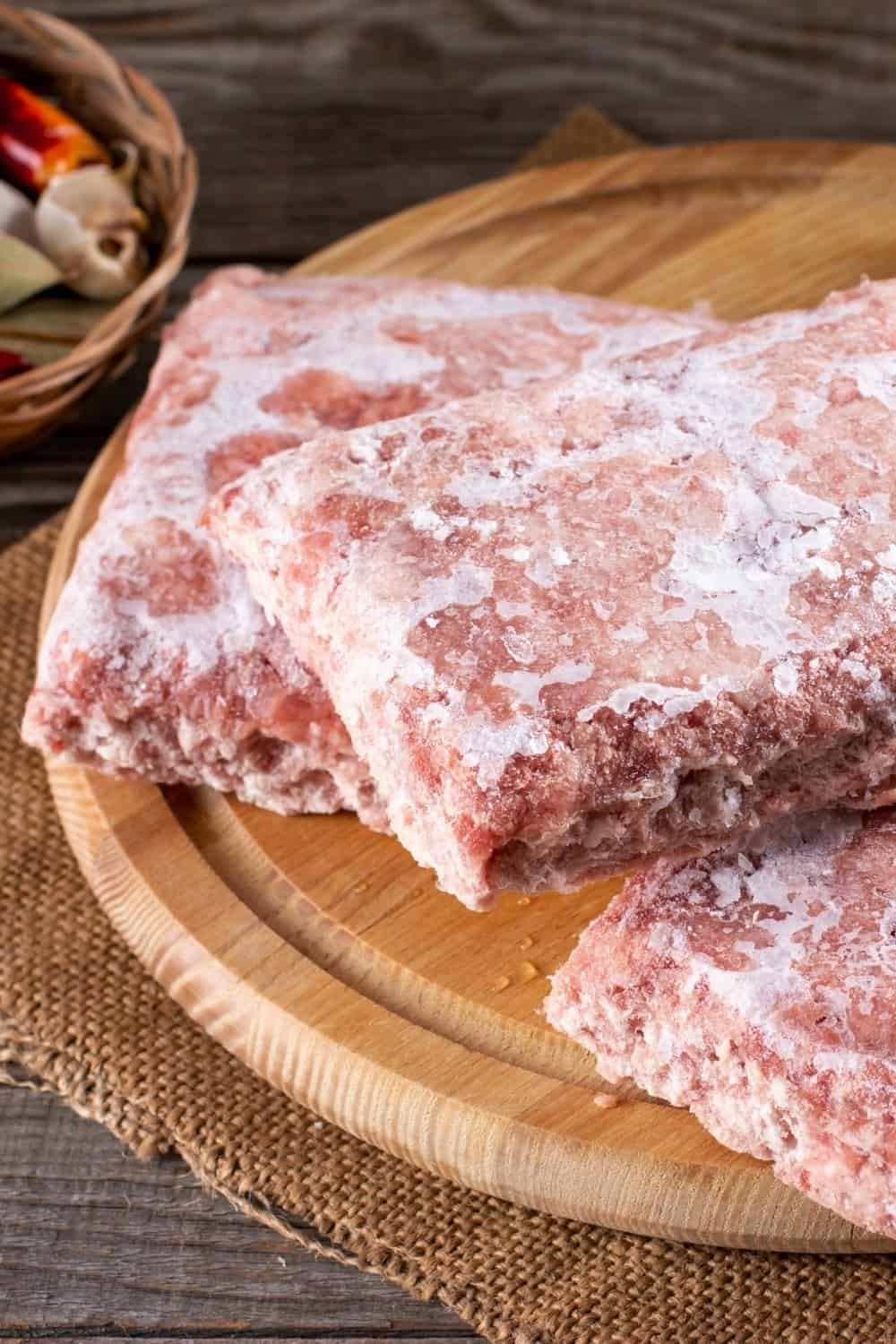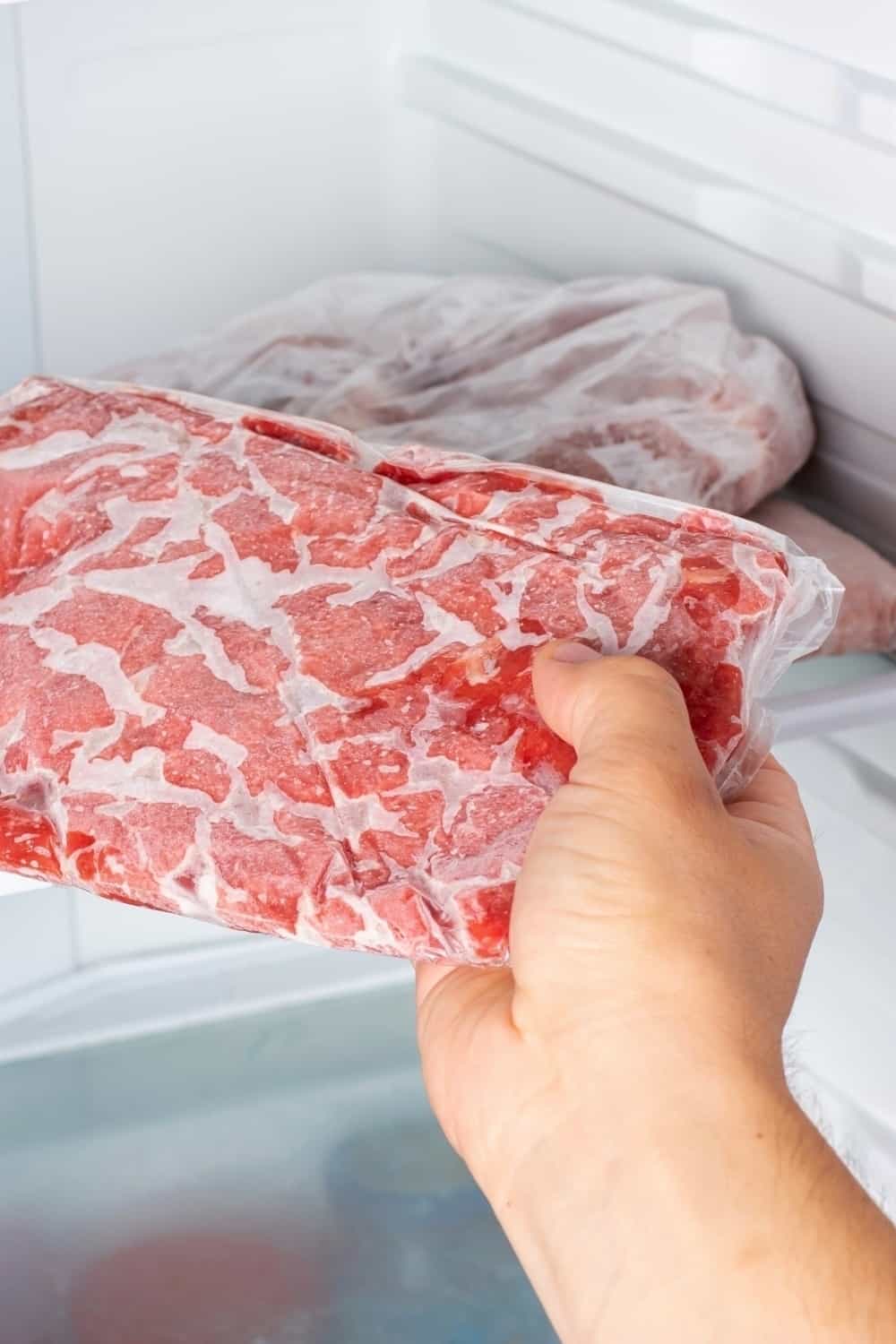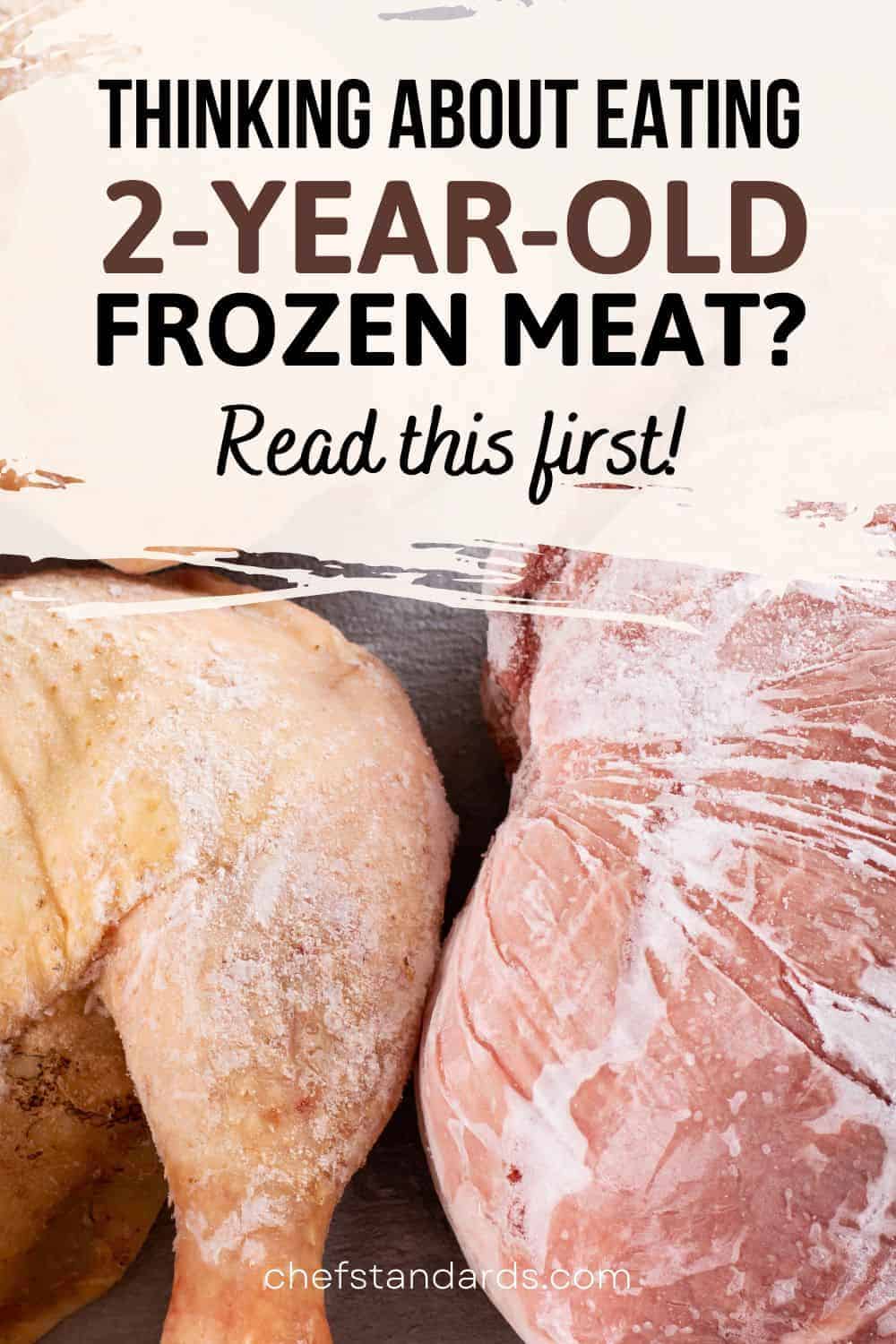So, your meat has been frozen for 2 years and now you wonder whether it’s safe to eat? My answer is YES and NO.
Why yes?
Your meat is safe to eat if it was stored properly.
Why no?
Your meat is not safe to eat if it wasn’t stored properly and there are signs of spoilage.
Below you’ll find all you need to know about meat spoilage, proper storage, defrosting, and more. (You can thank me later.)
Is It Safe To Eat Meat That Has Been Frozen For 2 Years?

Yes, it’s safe to eat meat that was frozen for 2 years. This is not something that I’ve made up, but it is supported by the U.S. Department of Agriculture. Here’s what the USDA says about the safety of frozen food:
“Food stored constantly at 0 °F will always be safe. Only the quality suffers with lengthy freezer storage. Freezing keeps food safe by slowing the movement of molecules, causing microbes to enter a dormant stage.”
However, there’s a catch. Well, there’s always a catch. You need to make sure that the meat is stored properly meaning that it hasn’t come in contact with oxygen because this can cause spoilage.
Another thing that could happen due to inadequate storage is freezer burn. In that case, you shouldn’t consume the meat but toss it. Now, how will you know for sure that your meat is or isn’t spoiled?
I’ve got you covered.
5 Signs Your Frozen Meat Is Spoiled

If your meat has gone bad, you will notice changes in its color, texture, smell, and flavor. If you notice any of these signs, then you know your meat is spoiled and you should toss it away:
1. Freezer burn
If your meat is freezer burned, then it will be discolored and dried out. This happens when the meat isn’t stored properly, so ice crystals form on the surface of it. Such meat shouldn’t be consumed (especially if it is followed by other signs of spoilage).
2. Mold
When you see mold on your meat, you know it’s one of the telltale signs that it has gone bad. This applies to any other food as well.
Inspect your meat before cooking to make sure it isn’t spoiled or going bad. If you see mold, it’s best to discard it.
3. Slimy texture
If the meat has a slimy or tacky texture, it’s one of the biggest signs that it has gone bad. It means that the bacteria are multiplying on it, so it’s best to discard it.
Reminder: After touching and feeling the meat’s texture, don’t forget to wash your hands thoroughly.
4. An off smell
Normally, meat shouldn’t have any smell. So, if you notice an unpleasant smell, you can be sure that it is spoiled.
The sour smell of frozen meat is usually a result of improper storage. In order to extend its shelf life, read the tips below.
5. Unusual flavor
Let’s say that you missed detecting the signs of spoilage, and you cooked the meat. Don’t forget to pay attention to its flavor once you start eating it.
If the meat’s flavor is unusual, don’t risk continuing to eat it. Discard the meat, so that you avoid the potential food poisoning.
RELATED: Here Are 4 Signs On How To Tell If Ground Turkey Is Bad
How To Safely Store Meat In The Freezer

When storing meat in the freezer, you want to make sure that it doesn’t come in contact with air because this would spoil it. Here’s how to safely store meat in the freezer:
Use a freezer bag or an airtight container. Remove as much air as possible and don’t forget to write the refreezing date on the label of the freezer-safe container or freezer bag.
You can also use foil wrap or plastic wrap but keep in mind that they are not airtight and can dry out the meat or cause freezer burn. Once again, an airtight container or freezer bag is the best bet!
How To Safely Defrost Meat: 4 Thawing Methods
The safest way to thaw meat is in the refrigerator. However, I’ll also include some other methods of thawing meat, so you can choose which one suits you best:
1. Thawing meat in the refrigerator
The meat will thaw in the refrigerator in a few hours (depending on what type of meat you’re thawing), or you can thaw it overnight. Once thawed in the refrigerator, the meat is safe for another 2 days.
Keep the meat in its original packaging and place it on a large plate or vessel. Make sure that the sides of your plate or baking dish are high enough to catch any juices that may leak out during the thawing process.
Pro tip: If you want to speed up the thawing process in the refrigerator, consider adding some water to a plate or tray.
2. Thawing meat using cold water
Allow the meat to thaw for a few hours with this thawing method. Once thawed using cold water, the meat needs to be cooked immediately.
Leave the meat in its original packaging and place it in a container (or sink) filled with cold water. Make sure to replace the water with fresh cold water every 30 minutes.
Pro tip: If your turkey isn’t fully immersed in the water, then add some weight on top of it.
3. Thawing meat in the microwave
Meat weighing 4-5 pounds will thaw in 30 minutes with this thawing method. Once thawed in the microwave, the meat needs to be cooked immediately.
Remove the wrapping and place the meat in a microwave-safe container or a dish that is high enough to catch any juices that may leak during the thawing process. Rotate and flip the meat (or stir if it is ground meat) a few times during the process.
Pro tip: Microwave the meat low and slow for the best results and to avoid cooking.
4. Thawing meat on the countertop
Here’s what the USDA says about this thawing method: “Even though the center of the package may still be frozen as it thaws on the counter, the outer layer of the food could be in the “Danger Zone,” between 40 and 140 °F — temperatures where bacteria multiply rapidly.”
Thaw meat on the counter for an entire day or overnight depending on its size. Once thawed on the countertop, the meat needs to be cooked immediately.
Place your meat on a kitchen countertop in an adequate dish or a tray, and maintain the room temperature to a minimum to avoid bacterial growth.
Pro tip: You can put ice bags next to the meat on a counter in order to maintain a minimum temperature.
Is It Safe To Refreeze Meat After Thawing?

Yes, it’s safe to refreeze meat thawed at room temperature, but you’ll have to cook it first before refreezing it. This argument is also supported by the USDA in the following words:
“If raw or cooked food is thawed in the refrigerator, it is safe to refreeze it without cooking or heating, although there may be a loss of quality due to the moisture lost through thawing.”
There’s also one thing that you shouldn’t do. According to the USDA, you shouldn’t refreeze any food left outside the refrigerator for longer than 2 hours.
The effects of refreezing meat
Even though it’s safe to refreeze meat that has been handled properly, there’s one disadvantage to doing so.
By refreezing meat, you compromise its quality in terms of its taste, flavor, and appearance. That being said, here are the effects of refreezing meat you should know about:
• The texture of meat may become slightly mushy.
• The original taste and flavor will be altered.
• The meat will have a duller color and overall appearance.
How To Refreeze Meat After Thawing
You made sure that your meat isn’t spoiled and you would like to refreeze it without compromising its quality. Here’s how you’ll do it:
Put the meat in a freezer-safe container or freezer bag and remove as much air as possible. Write the refreezing date on the label of the freezer-safe container or freezer bag.
NOTE: You should consume the refrozen meat within 3 to 4 months.
Any more questions?
Feel free to ask. 😎

